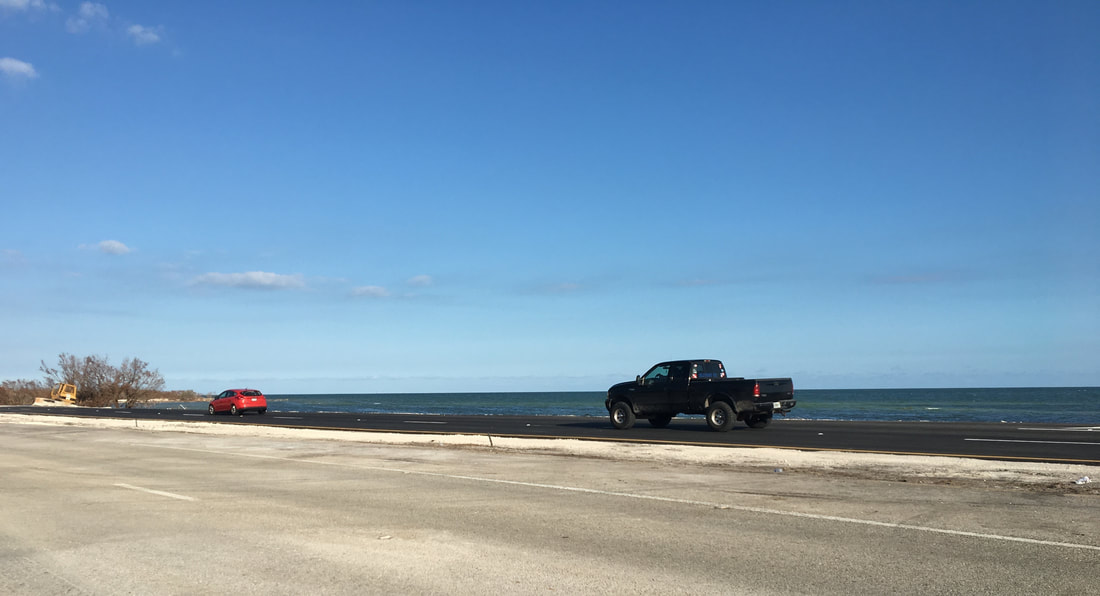|
On Friday, President Joe Biden signed into law authorization of a U.S. Army Corps of Engineers (USACE) $2.6 billion coastal storm and sea-level rise infrastructure resiliency project in the Florida Keys. The project authorization has already passed through Congress and federal lawmakers; however, appropriations for the project will require separate, annual approvals by Congress.
On Friday, the County also secured a nearly $1 million initial appropriation, approved in the omnibus spending bill to fund the planning, engineering, and design of six U.S. 1 stabilization projects in the Florida Keys, the first phase of the plan. The plan includes 5,500 feet of the roadway at mile markers 79.5, 70, 70.9, 67, 37, and 34.5, identified as vulnerable to erosion and wave energy. Estimates for the completion of the construction phase of the U.S. 1 stabilization project are $16 million. With the Board of County Commissioners' support, Chief Sustainability Officer Rhonda Haag and Legislative Affairs Director worked with USACE and local stakeholders for the past five years to put this project together, including numerous public meetings to discuss the project. Then they worked to move the project authorization and appropriation through Congressional approval. Based on the development of a three-year USACE Coastal Storm Risk Management Feasibility Study, the project plans for the economic, environmental, and social effects of coastal storms and sea-level rise and addresses the hardening of U.S. 1, dry floodproofing of critical infrastructure and private commercial buildings, and elevating residential residences. The study did not address the resiliency of locally-maintained roads, which Monroe County completed under a separate study. Future appropriations will allow for the voluntary elevations of up to 4,698 vulnerable residential homes and the dry floodproofing of 1,052 commercial and 53 critical infrastructure buildings susceptible to storm surge damage throughout the Florida Keys. Dry floodproofing allows for essential services to resume more quickly after a storm surge event. The total project, including the dry floodproofing and elevations, is estimated at $2.6 billion, to be split 65 percent federal ($1.7 billion) and 35 percent non-federal ($893 million). Non-federal funds can come from the state, county, municipalities, residents, and other non-federal entities. The County is coordinating with the Florida Dept. of Transportation for the non-federal match for the U.S. 1 stabilization phase. The County also intends to sign sub-agreements with the five municipalities to authorize and fund work performed within the cities. "We are committed to making Monroe County as resilient as possible against the effects of future storms and sea-level rise," said Roman Gastesi, Monroe County Administrator. "This partnership with USACE allows us to tap into federal money to help offset resiliency costs to Florida Keys residents." -- What's the difference between authorization and appropriation? Congress requires authorizations to be in place before final funding decisions are made. An appropriation provides the legal authority to spend or obligate U.S. Treasury funds.
0 Comments
Leave a Reply. |
Submit Your StoriesChamber members send us your press releases on your organizations accomplishments, staff awards and/or major happenings. We will post them for free. Archives
July 2024
Categories
All
|
|
Greater Key West Chamber of Commerce. All Rights Reserved.
510 Greene St., First Floor | Key West, FL 33040 [email protected] | sitemap |


 RSS Feed
RSS Feed
